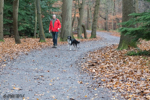
Initial Thoughts on Dog Photography
My lovely dog Harley joins me on 90% of my daily photographic outings. We combine his exercise with my deliberate practice of the art of photography, which means that Harley is amongst that small set of dogs that understands the command: “Get out of shot”.
When the scene would benefit aesthetically from a man in a bright red ski jacket positioned on the thirds, I have learned that a dog for him to be walking, justifies his presence artistically, and in any case is impossible to avoid. Increasingly, Harley is becoming the subject of my images, and I am learning the challenges of photographing a very black and very white dog. He will “stay” and look in my direction when called, and we are currently working on his looking interested whilst doing so.
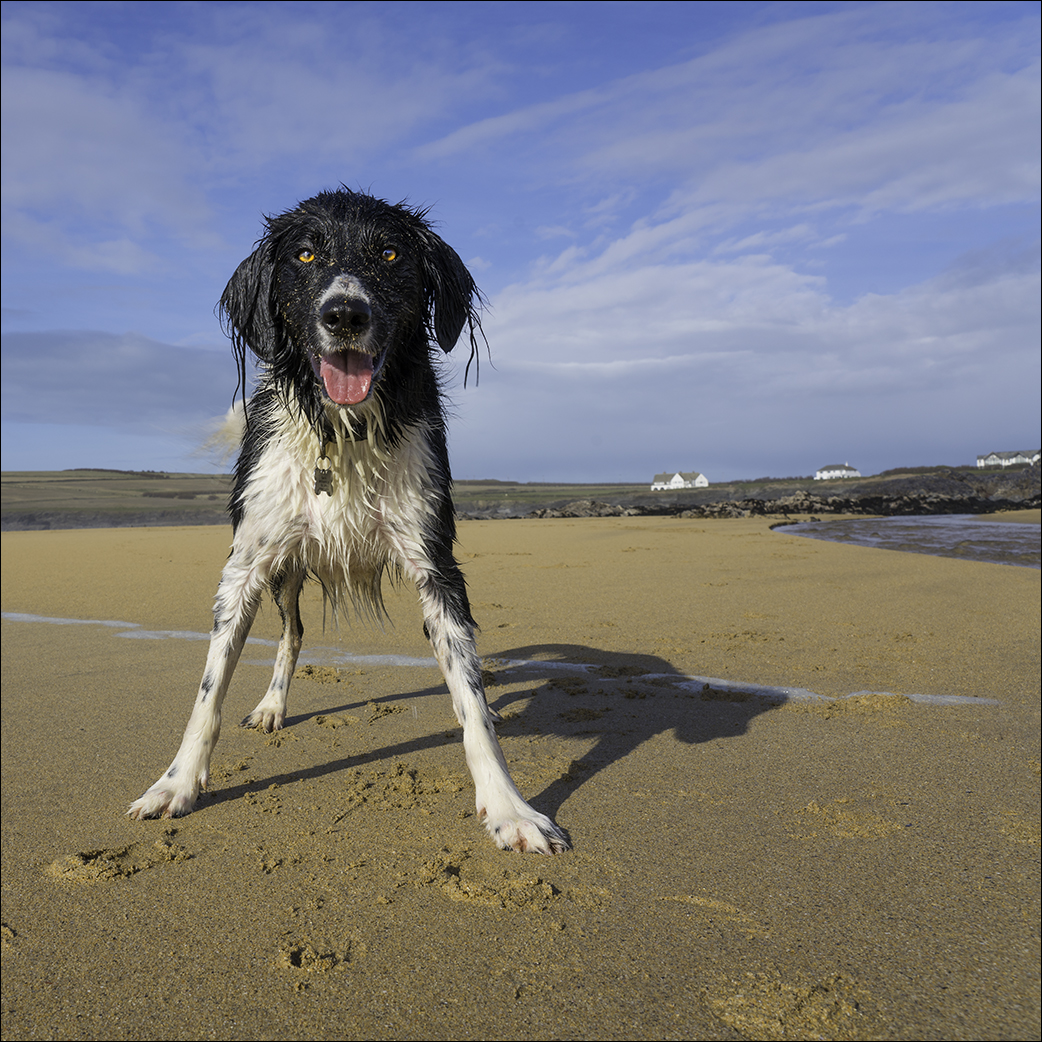
Although many of my images are labelled something like, “Collie in Woods”, the canine aficionado will spot that Harley’s no pedigree. He was a rescue from Battersea Dogs Home where be was billed as a “Sprollie”, i.e., half springer, half collie which is apparently a very fashionable cross. Subsequent DNA analysis revealed that he’s actually only 3/8 collie, a quarter greyhound a quarter saluki and one eight “undetermined”, politley a “lurcher”, less politely “mongral”. In any case delightful.
This is definitely a post that I expect to revisit in the future. So, if you have any ideas or thoughts, please post comments below.
To see more posts on other photographic topics, or to follow my learning progress, please like or follow me on the social media channel of your choice to the right.
Dog Basics
The things that everyone will tell you about photographing either pets or children:
- Most importantly, shoot at their level; get down low to achieve an equal-to-equal connection
- Either shoot in their natural environment or with a completely plain background
- Focus on the eyes, as the gateway to their sole.
Normal Rules Apply
Composition big in the frame, etc. – normal rules apply. See my post on this subject.
However, as it says in that post, animals should be given a little more space in the frame for context.
Animal Specific Issues
Working with animals (and probably children, although I have less experience of this) brings its own challenges. Most particularly, obtaining some buy-in from the model, when for posed shots even just getting them to look in your direction is a long way from a foregone conclusion.
Candid shot are in many ways easier and more rewarding for both photographer and model. However, it generally requires a third party to interact with the pet in a predictable manner so that the shot can be set up. In the “Wet n sandy” shot above, my wife was continually throwing a stick into water by the sandbank to Harley’s obvious delight.
Making the model look interested
I can’t say I have completely mastered this as yet, and I may be over interpreting my dog’s emotions but in some of my images Harley clearly looks bored!
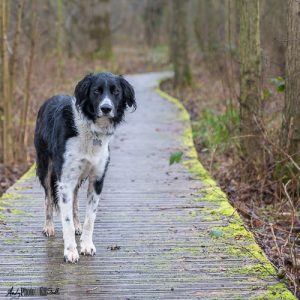
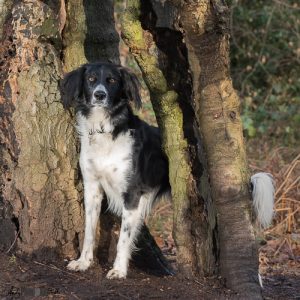
The later image is clearly better but he still doesn’t look very happy. Perhaps, chasing sticks is his job, and as such something he takes very seriously.
Animals with Black Fur
One of the darkest, genuinely totally black things you will ever photograph is black animal fur. If there is any light in the background, black dogs can easily turn into silhouettes against it. Another problem is that black dogs often look as though they have no eyes.
This challenge is one of those rare and joyful opportunities for the person with a proper camera to demonstrate their superiority over their friends with a smart phone. SHOOT RAW. Technically, this gives you a much wider dynamic range. So by using the “Shadows” slider in Lightroom it is possible to extract detail from what would otherwise have been a block of black in a JPEG. The only downsides to shooting RAW are file size (often 4 or 5 times the size of a JPEG) and the fact that they need to be converted to JPEGs before anyone else can see them. Other than when I’m under time pressure to get shots out quickly for the Parkrun, I shoot RAW all the time. Note: Harley was just a black blob in the following image before I adjusted the Shadows in Lightroom.
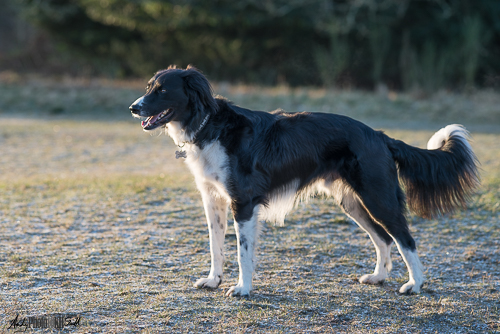
A black dog shot against a plain black background can look quite effective. Just make sure you have more lighting falling on the animal than the background.
Animals with White Fur
White fur is a similar problem to black fur in that a loss of detail can result in coat looking like a solid block of blown out white rather than soft and fluffy fur. Again RAW files collect the detail you need, and the “Highlights” slider in Lightroom allows you to bring these back into range so that the detail is exposed.
Controversial Issue: Use of Flash or Artificial Lighting
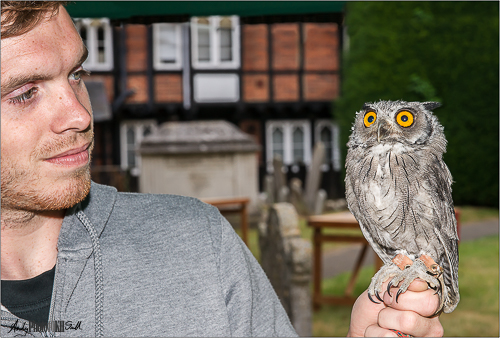
I shot the above image at the Beaconsfield Country Show in 2016. I asked the falconer if it would be OK to use a diffused flash; he could not have been less concerned. However, when I entered this image in a competition, the judge mounted his hobby-horse and berated the entire room on the immorality of using artificial light when photographing animals. There are many other things wrong with the above image, including the cluttered and distracting background. However, I was somewhat bruised.
In 2017, I was again asked to photograph the Country Show, an important part of this also being the dog-show. The dog-owing residents of Beaconsfield take this very seriously and it it judged by a local vet. Photographically the problem is the dappled lighting under the trees where the judging takes place. So fearlessly, I decided to raise the issue of a fill-in flash with the presiding vet. Conversation below:
Me: “Would it be OK if I use a flash to achieve better lighting for you and the dogs?”
Vet: “Yes of course. No problem.”
Me: “Don’t dogs have sensitive eyes though?”
Vet: “Will this flash damage the eyes of you or me?”
Me: “No. Of course not.”
Vet: “Then why do you think it will hurt the dogs?”
Me: “Well, I just thought I should ask…”
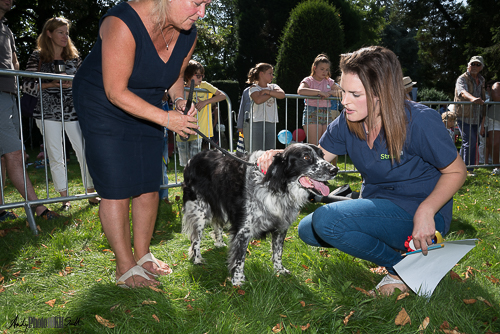
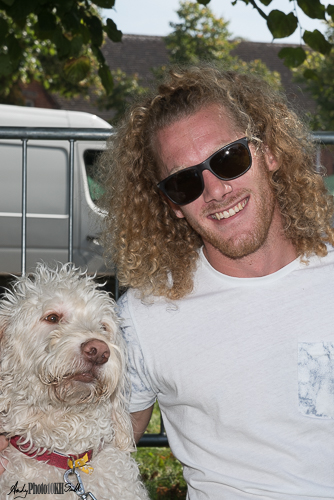
On Balance
If I am asked to shoot the Beaconsfield Country Fare again in 2018, I will probably take a fill-in flash. I will ask the presiding vet at the dog-show again for permission to use this. If only to remind her that she’s agreed. However, I will avoid its use with the birds of prey.
This is definitely a post that I expect to revisit in the future. So, if you have any ideas or thoughts, please post comments below.
To see more posts on other photographic topics, or to follow my learning progress, please like or follow me on the social media channel of your choice to the right.